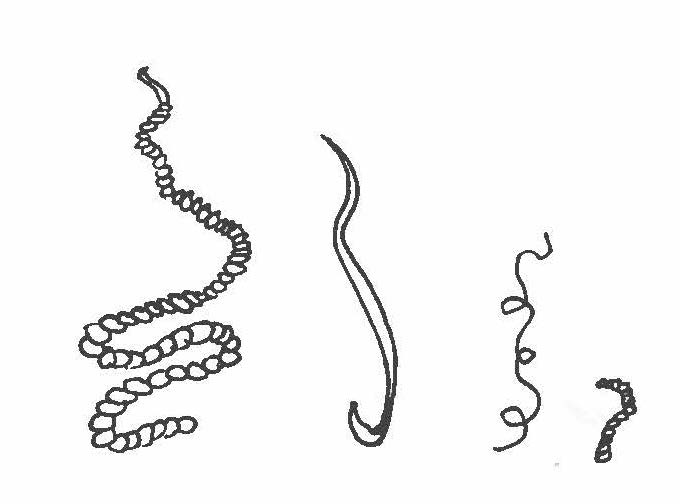-
Parasites have a complex lifecycle.
-
Parasites are transmitted from bird to bird differently than viruses or bacteria.
-
Serology (blood analysis) doesn’t work for diagnosing parasites.
-
Quarantine and disinfection are of little use in controlling parasites.


Worms
Ascarids: Large Roundworms
Large roundworms or ascarids are the most damaging of the worms common to backyard flocks. Mild infestations of ascarids often go unnoticed, but severe infestations can cause a reduction in nutrient
absorption, intestinal blockage and death.
Severe infestation not only makes the birds less efficient, it also makes them more susceptible to other disease organisms. Large roundwormsthem are about the thickness of a pencil lead and grow up to four and one-half inches long. They are easily seen with the naked eye and occasionally migrate up the hen’s reproductive tract and become encased in a newly forming egg.
The life cycle of the large roundworm is direct, meaning that the parasite eggs are found in the droppings of infected birds and are passed directly to birds who consume contaminated feed, water or feces. Signs of ascarid infestation include lethargy, weight loss and diarrhea. Large roundworms can be controlled by strict sanitation, complete cleaning of housing between groups of birds, and segregation of younger birds. Use of clean range for each group of birds will help to reduce the level of Ascarid infestation in a flock.
See Parasite Treatment, Prevention and Control for table of medications to treat Roundworms.